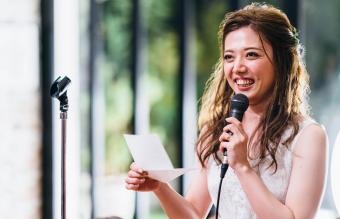
Although most weddings are performed for their religious significance, you may be surprised to know that several wedding symbols originated from pagan or decidedly non-religious roots. If you are interested in knowing the meaning behind wedding symbols, consider the following popular items.
Nuptial Symbols and Their Meanings
Many wedding symbols can trace their origins to ancient times while others are more recent additions to wedding traditions.
Wedding Cakes
Wedding cakes originated in ancient Rome and were once made from wheat or barley. More like a type of bread, the bride was hit over the head with the cake to make her fertile. Wedding guests were encouraged to gather the pieces of cake as they fell and keep them for good luck.
Symbolism of Groomsmen
Groomsmen were required in the middle ages because many weddings required an actual kidnapping of the bride in order for the ceremony to take place. The groomsmen would steal the bride from other tribes or clans and bring her forcibly for the groom to marry. Another interpretation is that the groomsmen were recruited by the groom to help defend his bride from such kidnappings.
White Gowns, Bouquets, and Veils
White wedding gowns became the rage during the reign of Queen Victoria of England, and white was thought to represent modesty and purity for the bride.
A wedding tradition as common as the white gown is the bouquet, carried today for aesthetic purposes. Originally, though, wedding bouquets included herbs such as rosemary and lavender, along with garlic, to ward off evil spirits and mask body odor. Orange blossoms were also popular, and represented fertility.
Wedding veils were used by Roman and Greek brides as part of the arranged marriage process. Since most marriages were arranged for purposes of increasing a family's wealth or power, grooms were not allowed to see their brides until just prior to the marriage. The veils were used so the groom could not view the bride before the wedding and refuse to marry her if he did not like her looks. Another interpretation is that the veil helped conceal the bride so evil spirits would not know whom to curse.
Something Old, Something New
The old saying "Something Old, Something New, Something Borrowed, Something Blue" is actually a superstition that started in medieval Europe as a means to repel evil spirits. Something old was a tie to your life prior to marriage. Something new represented the joining in marriage to a new spouse. Borrowing something from a currently wedded couple was thought to provide the new bride and groom good luck in their marriage. Something blue worn by the bride represented purity and fidelity.
Tossing Rice and Tying the Knot
Tossing rice was a tradition started during pagan festivals as a wish for bountiful harvests. If the crops had been plentiful, grains such as wheat were thrown and if the crops had been bad, rice was thrown instead. The wedding guests also threw the rice to encourage high rates of fertility since it took many children to work the land.
Tying the knot refers to the ancient Roman custom of unmarried women wearing a chastity girdle closed with a series of knots. The groom would have to untie all the knots to consummate the marriage.
Symbolism of Wedding Rings
The practice of wearing wedding rings is thought to have started with the Egyptians in 3000 BC. The first rings were made of braided hemp and Romans later constructed their wedding rings of iron. Today's rings are made of gold to symbolize the purity and everlasting aspects of marriage while the unbroken circle of the ring represents the continuity of marriage.
Doves and Weddings
Doves are meant to represent peace and new beginnings. Doves are thought to be used as a representation of the dove that flew from Noah's ark and came back after the flood. The dove held an olive branch that showed everything was not destroyed and in fact there was dry land and trees sprouting new life.
Add a Little Symbolism to Your Wedding
Regardless of the type of wedding you have, incorporating at least some of these symbols is in order. Traditional wedding symbols add a sense of history while still leaving you room to create your own special ceremony and lifelong memories.







